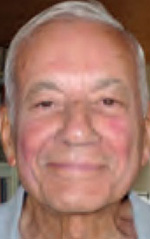Diplomacy Can Save the Day
Reflections
BY GEORGE B. LAMBRAKIS
I have been prompted to reflect on my own experiences in Lebanon as I follow the Trump administration’s foreign policy in the Middle East—and, in particular, the anticipated rollout of an Israeli- Palestinian peace proposal that is almost certain to be rejected by the Palestinians and their Hezbollah and Iranian allies.
In Lebanon, that crucible of ethnic, religious, sectarian and political complexities where the conflicting interests of Iran, Syria, Israel and Saudi Arabia may soon collide, the past interaction of American military ventures and diplomacy offers a useful cautionary tale.
I arrived in Beirut as deputy chief of mission (DCM) to Ambassador G. McMurtrie “Mac” Godley in September 1975, just as the second Lebanese civil war had begun. (It would last—with occasional interruptions—until 1990.) My wife and two daughters were soon evacuated as part of the general thinning down of nonessential embassy personnel from what had been a large regional center for various U.S. agencies operating in the Middle East.
The conflict had been triggered when a busload of Palestinian refugees driving through a Maronite (Christian) village in the north was attacked, and two dozen of them were killed. The Palestine Liberation Organization fighters allied themselves to the Sunni Muslim militias led at that time by Kamal Jumblatt, whose Druze followers hoped to modify the terms of the 1943 unwritten power-sharing agreement between Maronites and Sunnis that left the Druze out. In this battle the Greek Orthodox and Shia remained neutral.
Sadly, Amb. Godley had to depart Beirut in November 1975 for cancer treatment, and Special Emissary Dean Brown’s effort to mediate an end to the fighting failed. I had been serving as chargé d’affaires for six months by May 1976, when veteran diplomat Francis Meloy arrived as the new U.S. ambassador.
The war was at a stalemate because Syria’s President Hafez al-Assad had surprisingly intervened to prevent a Maronite defeat. Quietly welcomed by Secretary of State Kissinger, Assad’s intervention was limited by strong warnings from Israel.
On June 16, Meloy set out to present his credentials to the new Lebanese president, Elias Sarkis. Dayton Mak, a retired former Beirut DCM had agreed to replace me as Meloy’s deputy, but he could not reach Beirut because the airport was closed by Palestinians. So Meloy, accompanied by Robert Waring, our economic counselor, who knew the former central bank head Sarkis well, set out from Muslim West Beirut to Sarkis’ office in Maronite East Beirut.
Their driver, Zuhair Moghrabi, suddenly ordered the embassy’s security “follow” car to turn back just before crossing the “green line” into Maronite territory.
All three men in the ambassador’s car were kidnapped and their dead bodies dropped in front of the unfinished U.S. embassy in West Beirut the same day.
A British convoy evacuated Meloy and Waring’s bodies overland to Syria and back to Washington, D.C., for a solemn memorial service, while I resumed charge of the embassy and presided over a service for all three men.
The kidnappers were never identified (though I have my own theory), and Secretary Kissinger ordered another evacuation of nonessential personnel and American citizens who wished to leave. Because of a promise he had made to Israel, Kissinger was unable to directly contact the Palestinians, who by then controlled most of Beirut, so he mobilized the Egyptians, Saudis and French to convey his threat of serious consequences if the Palestinians did not let his people go.
The problem was how to go. The Beirut airport remained closed, and overland travel to Syria or even East Beirut was dangerous. As we and Washington discussed options, the U.S. Navy proposed a Marine landing. I couldn’t help remembering an earlier civil war I had had the opportunity to study intensively at Tufts’ Fletcher School of Law and Diplomacy in mid-career—the 1958 Lebanon crisis.
In July 1958, under President Dwight Eisenhower’s anticommunist Near East doctrine, 5,000 U.S. Marines had landed on Beirut’s beaches—only to be met by sunbathers in bikinis. In fact, the Lebanese army had received orders to resist the Marine landing, but U.S. Ambassador Rob McClintock arrived and convinced Maronite General Fuad Chehab to call off his troops.
U.S. Special Emissary Robert Murphy then came and helped work out a diplomatic settlement that led to Chehab being elected Lebanon’s next president. The American troops soon returned home, and civil war was tamed for another 17 years.
The British chargé d’affaires stormed into my office. “What are you doing? We know what you’re doing!” he shouted.
Now in 1976, with Secretary Kissinger pushing the evacuation of Americans, I was surprised one afternoon when the British chargé d’affaires stormed into my office. “What are you doing? We know what you’re doing!” he shouted.
After he calmed down he told me that the U.S. Navy with Marines was mobilizing to invade Beirut, very much as in 1958. The British were horrified.
I immediately fired off a “flash” telegram to Washington, which brought Near Eastern Affairs Assistant Secretary “Roy” Atherton to the secure telephone.
“The president [Gerald Ford] is about to make a decision,” he said. “How do you feel about it?”
Thanks a lot for asking, I thought. “I’m against it, and so are the British,” I replied.
He was surprised that London was aware of the plan. “Send me a cable. The president is about to make a decision.”
Fifteen minutes later, as I was consulting my country team, Atherton called again. “Where is your cable? The president is about to make a decision.”
“All of us, including the military attaché (a very senior colonel), are against a Marine landing. It will create all sorts of new problems,” I said, and sent a second “flash” cable to that effect.
Happily, President Ford decided against a Marine landing. Instead, he stayed up that night, despite the time difference, while the Navy landed unarmed troop carriers on the morning of June 20, 1976. The ships peacefully evacuated more than 500 Americans and other foreign nationals from Beirut over the next month.
I was informed by a Greek Orthodox contact and the Egyptian and French embassies that the Navy evacuation was protected by armed Palestinians and Jumblattists. The fact that I had come to Lebanon after three years as the NEA man in London’s political section, where I had enjoyed confidential access to all relevant Foreign Office officials, made it easy for the Brits to come to me to protest Washington’s plans.
Thus, diplomacy prevented another American military intervention that was bound eventually to draw American Marines into action against Palestinians, Jumblatt’s Muslim/Druze and perhaps even the Syrians.
The much better known landing of American Marines (with French and Italian troops) in Lebanon six years later, in 1982, is the exception that proves the rule.
Following the breakdown of a United Nations cease-fire the United States had helped broker and the subsequent invasion of Lebanon by Israel, Washington deployed U.S. Multinational Force Lebanon to oversee the safe departure of PLO fighters from Beirut, to support the Lebanese government following the massacre of civilian Palestinian refugees by Maronite militia and to assist with the Israeli withdrawal.
American troops were still there in 1983, when their base was attacked, and they riposted. Soon the American and French barracks were blown up by truck bombs, killing 241 American military personnel. This followed a similar attack on the American embassy, killing a number of Americans and Lebanese. Those attacks were attributed to Hezbollah, a pro-Iranian Shia militia that had become a serious player, supported by Syria, in the shifting Lebanese scene.
President Ronald Reagan compromised by ordering the military back to U.S. Navy vessels off the Lebanese coast. By 1984 the Americans quietly sailed home.
These experiences sound a warning about the perils of ditching diplomacy and opening new fronts for the American military to explore.



